Recent Water Damage Posts
How to Handle Commercial Water Damage
2/14/2024 (Permalink)
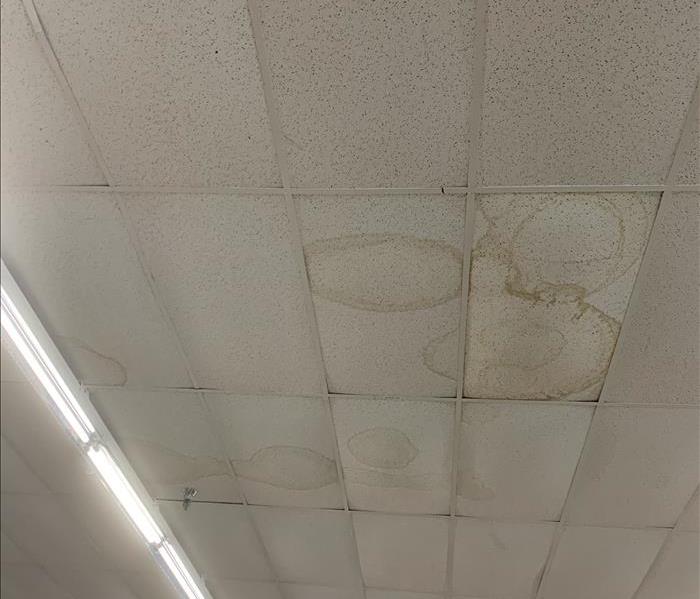 As experts specializing in commercial restoration, our goal is to equip you with the necessary insights and steps to effectively manage emergencies.
As experts specializing in commercial restoration, our goal is to equip you with the necessary insights and steps to effectively manage emergencies.
Water damage in commercial spaces can be a sudden and distressing event, potentially disrupting operations and causing serious financial strain. As a SERVPRO® professional specializing in commercial water damage restoration, our goal is to equip you with the necessary insights and steps to effectively manage such emergencies.
Immediate Actions in Response to Commercial Water Damage
Upon discovering water damage in your commercial property, it's crucial to take immediate steps. Firstly, identify and stop the source of water intrusion. This might involve shutting off main water valves or seeking immediate assistance from the appropriate authorities. Furthermore, prioritize the safety of all individuals present in the affected area. If there are safety concerns, evacuate the building until it's deemed safe to return.
Assessing the Extent of Damage
Documenting the damage is essential. Take comprehensive photos or videos of the affected areas, inventory, and equipment. This documentation will play an important role in expediting insurance claims. Conduct a thorough evaluation of the damage to the structure and assess potential harm to walls, flooring, electrical systems, and the risk of mold growth due to the moisture.
Professional Assistance and Restoration Process
Quickly engage professional services like SERVPRO of Berlin/Williamstown to mitigate the damage. Our emergency response team is available round-the-clock to provide swift and expert assistance. Quick action is essential in minimizing further damage and initiating the restoration process. Upon arrival, our trained professionals will conduct a detailed assessment of the damage and devise a customized restoration plan tailored to your specific situation.
Efficient Restoration Strategies
Using advanced equipment, our team will quickly extract standing water, preventing additional damage and mitigating moisture-related issues. Industry-grade drying techniques are then employed to eliminate moisture from affected surfaces and materials.
Our specialized cleaning methods ensure thorough sanitation and restoration of affected areas, creating a clean and safe work environment. Then, restoration and reconstruction services are provided to return your property to its pre-damaged condition, ensuring a seamless recovery process.
Throughout the entire process, our SERVPRO® team will assist in coordinating with your insurance company, providing comprehensive documentation for a smoother claims process.
Why Choose SERVPRO® for Commercial Water Damage Restoration?
With decades of experience, our skilled professionals possess the expertise to handle any scale of commercial water damage. We employ cutting-edge technology and industry best practices for efficient and effective restoration, minimizing downtime for your business.
In Conclusion
When faced with commercial water damage, having a trusted partner like SERVPRO® can make all the difference. Contact us today for professional and efficient commercial water damage restoration services.
At SERVPRO of Berlin/Williamstown, we're committed to restoring your business and minimizing disruptions caused by water damage. Trust us to handle the restoration process, allowing you to focus on getting back to business as usual!
Protecting New Jersey Commercial Spaces: Water Damage Risks and Effective Solutions
10/8/2023 (Permalink)
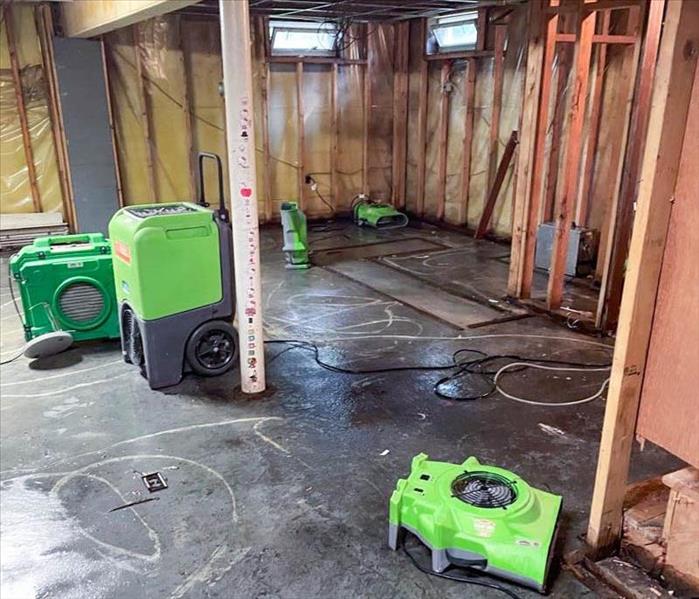 Timely action and preparedness can make all the difference in reducing damage.
Timely action and preparedness can make all the difference in reducing damage.
Water damage can pose significant challenges for commercial spaces, impacting businesses, employees, and clients alike. New Jersey, with its coastal areas and varying weather patterns, is no stranger to the risks associated with water damage. In this blog, we'll explore the unique risks commercial spaces face in the Garden State and provide actionable solutions to mitigate and address water damage.
Common Water Damage Risks in New Jersey Commercial Spaces
Severe Weather Events: New Jersey can experience intense storms, hurricanes, and heavy rainfall. These weather events increase the risk of flooding and water intrusion in commercial properties, particularly those located in flood-prone areas.
Plumbing Failures: Older plumbing systems, corrosion, and freezing temperatures can lead to burst pipes, leaks, and plumbing failures, causing extensive water damage.
Roof Leaks: Roofing issues, especially in buildings with flat roofs, can lead to leaks during rain or snow events. Over time, unnoticed leaks can result in significant damage.
HVAC Systems: Improperly maintained heating, ventilation, and air conditioning (HVAC) systems can contribute to moisture buildup, leading to mold growth and water damage.
Appliance Malfunctions: Commercial kitchens, laundromats, and other businesses with water-reliant appliances are at risk of leaks and equipment malfunctions that can lead to water damage.
Effective Solutions for Commercial Water Damage
Regular Maintenance: Implement a proactive maintenance schedule for your property. Regularly inspect roofing, plumbing, and HVAC systems to catch issues early.
Emergency Preparedness: Develop and rehearse an emergency response plan to minimize damage during severe weather events. Ensure that employees know how to turn off utilities.
Water Detection Systems: Invest in water detection systems that can alert you to leaks or flooding in real time. Early detection can prevent extensive damage.
Proper Drainage: Ensure that your property has proper drainage systems, including functioning gutters and downspouts. Ensure that water is directed away from the building's foundation.
Upgraded Plumbing: Consider upgrading older plumbing systems to reduce the risk of burst pipes. Insulate pipes to prevent freezing during colder months.
Commercial Restoration Services: Establish a relationship with a professional restoration service like SERVPRO. They can quickly respond to water damage emergencies and minimize downtime.
Water damage risks in commercial spaces in New Jersey are diverse, but with proactive measures and a reliable partner like SERVPRO® of Berlin/Williamstown, you can safeguard your business. Timely action and preparedness can make all the difference in reducing damage and ensuring the continuity of your operations. If you find yourself facing commercial water damage, SERVPRO® of Berlin/Williamstown is here to assist New Jersey business owners with expert cleanup and restoration services. We understand the unique challenges posed by water damage in commercial settings and are committed to helping you restore your property promptly and efficiently.
How to Prevent Water Damage During Construction
7/28/2023 (Permalink)
Water damage can be a significant concern during construction projects, potentially leading to delays, increased costs, and structural issues. Taking proactive steps to prevent water damage is crucial for the success of any construction endeavor. In this blog post, we'll discuss essential strategies and practical tips to help you safeguard your project from water-related risks, ensuring a smooth construction process and minimizing potential damage.
Plan and Assess
Start by thoroughly evaluating the site's topography, drainage patterns, and potential water sources. Identify areas prone to flooding, standing water, or poor drainage. This information will guide your planning and enable you to implement appropriate preventive measures.
Create a comprehensive water management plan that outlines specific steps and strategies to mitigate water-related risks. Consider factors such as erosion control, sediment containment, dewatering methods, and stormwater management. Engage with experienced professionals, such as civil engineers or environmental consultants, to assist you in developing an effective plan tailored to your project's needs.
Install Effective Drainage Systems
Proper drainage systems are essential to redirect water away from the construction site. Install temporary or permanent drains, trenches, or ditches to channel water away from excavations, foundations, and vulnerable areas. Consider using geotextile fabrics or erosion control blankets to stabilize slopes and prevent erosion.
Protect Openings and Vulnerable Areas
Cover open areas, such as excavations or foundation openings, to prevent rainwater from accumulating inside. Use waterproof tarps, plastic sheets, or temporary roofing structures to shield exposed areas. Ensure that windows, doors, and other openings are adequately sealed to prevent water infiltration.
Implement Erosion and Sediment Control Measures
Erosion and sediment control measures are crucial to prevent soil erosion and the migration of sediments into nearby water bodies. Implement erosion control techniques such as silt fences, sediment basins, and erosion control blankets. Stabilize disturbed areas with vegetation or geosynthetic materials to minimize erosion risks.
Properly Store and Manage Construction Materials
Store construction materials, such as lumber, insulation, or drywall, in a dry and covered area. Protect them from rainwater or moisture, which can lead to damage and mold growth. Utilize plastic wraps or tarps to cover materials stored outdoors.
Maintain Good Housekeeping Practices
Promote a clean and organized construction site to prevent water-related issues. Keep drainage systems clear of debris and sediment buildup. Promptly remove standing water or accumulated rainwater from excavations or low-lying areas. Regularly inspect and clean gutters and downspouts to ensure efficient water flow.
Stay vigilant about weather forecasts and potential storms. Adjust construction activities and implement additional preventive measures when adverse weather conditions are expected. Temporary suspensions or protective measures may be necessary to minimize water damage risks.
Conduct Regular Inspections
Frequent inspections of the construction site are crucial to identify potential water-related risks. Regularly check drainage systems, erosion control measures, temporary seals, and vulnerable areas. Promptly address any issues or vulnerabilities to prevent further damage.
Encourage open communication and collaboration among all stakeholders involved in the construction project. Ensure that everyone understands their roles and responsibilities in preventing water damage. Encourage reporting of any water-related concerns promptly.
Preventing water damage during construction is essential for the success and longevity of your project. By implementing proactive measures such as thorough planning, effective drainage systems, erosion control, and regular inspections, you can minimize the risk of water-related issues. Prioritize communication and collaboration among all parties involved to ensure a collective effort in safeguarding the construction site. Remember, investing time and effort in preventing water damage upfront will save you valuable resources, time, and potential headaches in the long run.
Basement Flooding After a Storm
3/11/2023 (Permalink)
 If you experience flooding, give SERVPRO a call after the storm clears.
If you experience flooding, give SERVPRO a call after the storm clears.
Water in the basement is a serious problem. It's not just that your furniture and other belongings will get wet, you could be dealing with mold, structural damage to your home, or even an outbreak of termites. If you find yourself dealing with flooding, here are some steps you can take to mitigate the damage and get back on track:
Contact the Professionals
If your basement is flooded, immediately contact the professionals. If you have a sump pump, call a professional to make sure it's working properly and that there are no clogs or other issues preventing it from draining water away from your home. If not, call someone who can install one for you.
If you're not sure whether or not to call in the professionals and want some advice on how best to handle flooding in general, give SERVPRO of Berlin/Williamstown a call today.
Run a sump pump
If you have a sump pump, turn it on and leave it running continuously until the water recedes. If this is your first time using a sump pump, check with a professional before installing one yourself. A professional can help ensure that your system is properly set up and maintained.
Once the flood waters have receded, inspect all areas of your basement for damage, especially electrical outlets and other devices that may have been submerged in water during high tide or storm surge events.
Clear sewer lines
If you don't have a sump pump, find out where your main sewer line is and clear a channel along its length so that water can flow more freely in that direction. This will help prevent backups caused by debris blocking the pipe.
You can also hire a plumber to check for cracks or other issues with the pipes in your basement floor or walls, which may be causing them to leak.
Foundation Cracks
If you find that the water has risen above the floorboards and into your basement, check for structural damage to your foundation by looking for cracks in the walls and floor. If there is structural damage, contact a professional to assess the situation and recommend a course of action.
Once you've assessed the damage, it's time to contact your insurance agent. They will be able to get an estimate for repairs and help you understand what is covered by your policy. It's important that you know what your insurance covers before calling them, they won't waste time trying to figure out whether or not something is covered and can instead focus on getting things fixed as quickly as possible.
If you are experiencing flooding in your basement, there are a few things that you should do as soon as possible. First and foremost, contact a professional. They will be able to assess the situation and determine whether or not there is structural damage to your home.
Flooding is a serious problem, if your basement floods or if you have any other type of water damage in your home, there are things you can do to clean up quickly and efficiently so that life can go on as normal again soon after the event occurs.
3 Effects of Water Damage
1/20/2023 (Permalink)
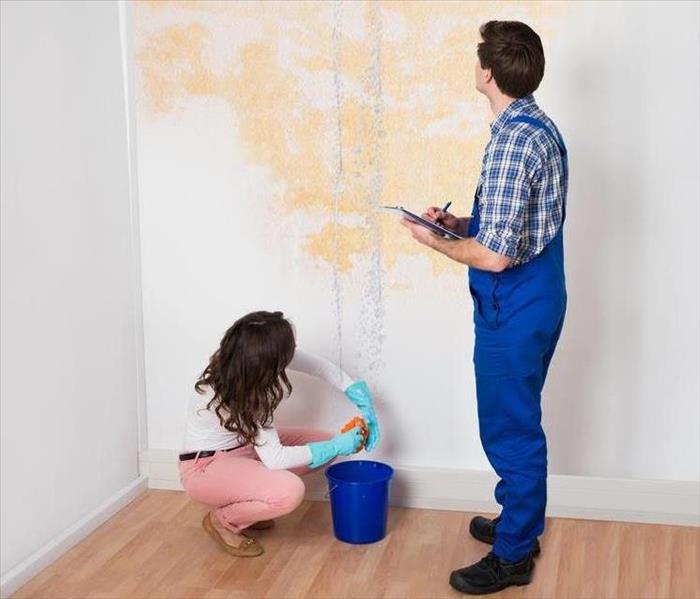 It is important to know the long-term effects of water damage.
It is important to know the long-term effects of water damage.
Water damage can strike at any time and in the most unexpected places. Whether it's from a leaking pipe or a broken appliance, water damage is always serious and should be addressed as soon as possible. In fact, if you don't get the problem fixed quickly and correctly, there are three long-term effects of water damage that can occur: mold growth, rotting wood, and structural damage to your home or business.
Mold
Molds are one of the most common long-term effects of water damage. The growth of mold may occur in as little as 24 hours after a flood and can spread quickly. Mold can obstruct visibility by residing above ceilings, behind walls, beneath floors, behind cabinets, and in other places where you cannot see it. It can damage your property in the long term if left untreated.
Rotting Wood
The deterioration of wood often occurs after a water loss. Moisture can cause wood to rot, crack or warp, and even swell. In addition to rotting wood, mold will begin to grow and spread.
The first step in mitigating the damage is to dry out the wood. If moisture remains in the wood, it can cause mold to grow later on. You should also clean up any standing water and remove any damaged items that may have been affected by water damage.
If the damage is extensive, you may need to remove and replace the affected wood. If you are not sure how to do this yourself, seek professional help.
Structural damage
When a home or business is damaged by water loss, there can be some long-term effects. One of the most common problems is structural damage. If the foundation is not properly sealed, water can erode it, causing flaws and compromising the structure of the house. If insulation becomes wet, it can reduce how well a home's thermal envelope works. This means that more heat will escape through your home's walls and windows compared to what would have happened if they weren't damaged.
Act Quickly
You should call SERVPRO of Berlin/Williamstown as soon as you discover the problem. Our team can help you mitigate and restore your property after a water loss, and they have the tools and expertise necessary.
In conclusion, it is important to know the long-term effects of water damage. The most important thing is to prevent it from happening in the first place. If you do have a problem, don’t try and fix it yourself; call a professional as soon as possible!
What Can Cause a Flooded Basement?
11/2/2022 (Permalink)
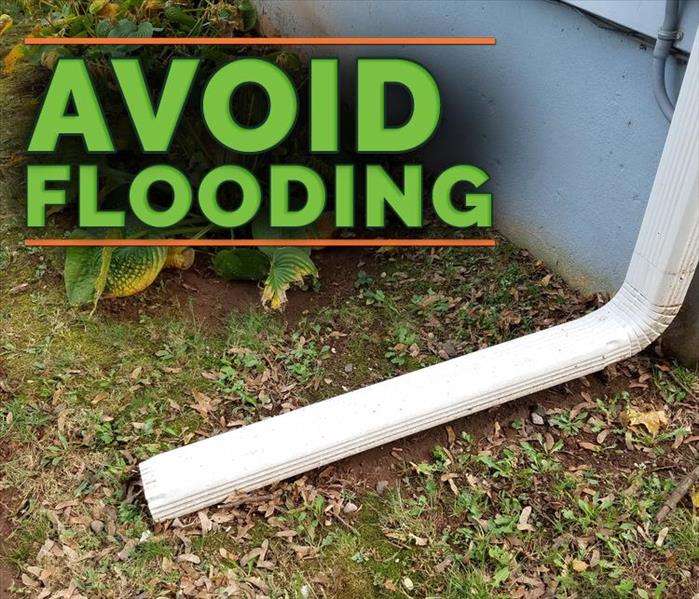 Make sure downspouts are extended to at least three feet away from your house to avoid flooding in a basement
Make sure downspouts are extended to at least three feet away from your house to avoid flooding in a basement
What Could Flood a Basement?
When a home floods, it can be devastating. And while some homes flood after days of heavy rains or snow, some homeowners may experience flooding from a simple faucet drip or a faulty sump pump. The good news is that there are ways to prevent basement flooding in your home. But what can cause a flooded basement?
Heavy Rainfall
Probably one of the most obvious causes of a flooded basement is heavy rainfall. Rainfall can cause basement flooding, but you can take some steps to prevent that. If you live in an area prone to heavy rainfall, keep your gutters and downspouts clean and make sure they don't overflow when it rains. Make sure all of the windows on your home are secure so water doesn't leak through them into your basement or crawlspace. You should also replace any damaged gutters or downspouts as soon as possible to avoid further damage from rainwater seeping through cracks in the structure of your house.
If heavy rainfall does cause flooding in your basement, call a professional right away for help with cleanup and repair services.
Melting Snow and Ice
Melting snow and ice is also a common cause of flooding. When the snow melts, it can cause water to flow into your basement. If this is the case, you will want to call an expert for help in removing the excess water as soon as possible so that it doesn't damage your home any further.
Faulty Downspouts
Faulty downspouts are another common reason for basement flooding. Downspouts are designed to divert water away from the foundation of your home, but if they're broken or not connected to the storm sewer or drain system, they can cause water to back up into your basement.
To make sure that this isn't happening at your house, inspect all of your downspouts and make sure that they're clear of debris and working properly.
Faulty Sump pumps
Sump pumps are designed to remove water from a basement. They are often located in the basement and controlled by a switch. Sump pumps can fail if they get clogged, or if the float switch sensor fails. If this happens, water will continue to enter your basement until it reaches a certain level, at which point it will flow over into your home.
It’s also possible for an older sump pump system to have been upgraded without checking its compatibility with newer wiring and other electrical components installed in your home’s foundation walls during construction or remodeling projects.
Sewage or Drain Backups
Sewage or drain backups are also a serious problem that can easily cause a basement flood. Sewage can contain harmful bacteria and viruses that can cause serious illness. Some of the most common pollutants found in sewage include:
Your House’s Location
Your house’s location can play a role in the likelihood of flooding. If you live in an area that is prone to flooding, it is more likely that your basement will flood if there are severe storms or other weather conditions occur. For example, if your home is located near a river or lake, then it may be susceptible to flooding during heavy rains. The same goes for homes on hillsides; these types of homes are vulnerable to erosion and landslides that could lead to water entering the home.
Broken Sewer Lines and Clogged Drains
A broken sewer line or a clogged drain can be a major problem that causes water to leak into your basement. A broken sewer line is more of an emergency situation, as it can cause raw sewage to leak into your home and potentially contaminate all the contents inside. This is especially true if the break is large enough for wastewater to flow from one side of the break to another side (for example, through your basement wall).
Causes for Flooding
It's important to note that there are a variety of causes for flooding, all of which can lead to mold problems and structural damage if not corrected quickly and properly.
If you suspect that there may be any amount of water damage in your home after a flood event, make sure to get an inspection from our team at SERVPRO. We'll carefully go through every inch of your property before giving you our assessment of what needs attention so we can pinpoint where any potential problems lie so they don't become bigger ones later on down the road when they aren't addressed right away.
If you’re experiencing flooding in your basement, it can be a stressful situation. However, there are many reasons for basement flooding that can be easily fixed. If you notice water collecting around the foundation of your house, contact a professional immediately to determine the cause and remedy it before further damage is done.
3 Facts To Know About Water Damage and Flood Recovery
8/27/2022 (Permalink)
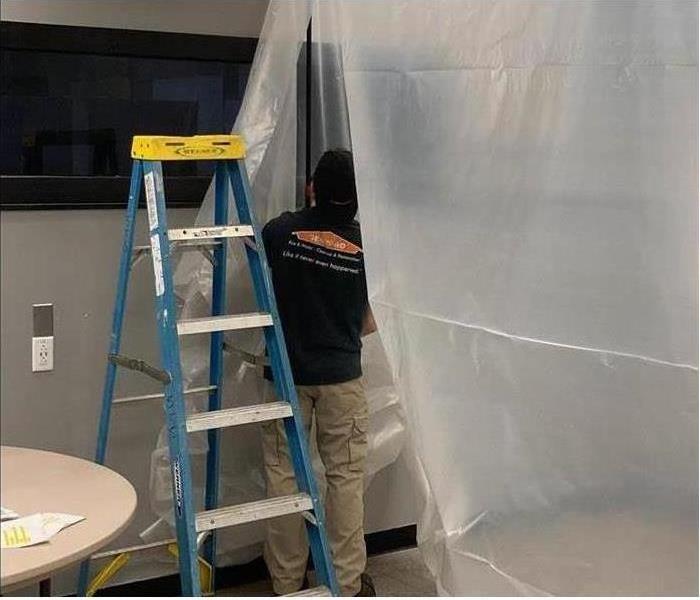 SERVPRO of Berlin/Williamstown has trained restoration technicians ready to help after water damage.
SERVPRO of Berlin/Williamstown has trained restoration technicians ready to help after water damage.
Water Damage and Flood Recovery: Three Things to Know
When flooding affects your Whitehall, NJ, home, it can be difficult to know where to begin when it comes to cleanup efforts. Whether the flood was caused by a pipe burst in your cellar or bathroom or from an overflow of a nearby creek during a rainstorm, it can ruin your home’s building materials and your belongings. Before you attempt to recover from water damage, there are a few facts you can keep in mind that may make the process less stressful.
1. Not All Flood Damage Is the Same
The amount of damage your home suffers from a flood can depend on many factors. For example, basement flooding caused by a leaking or ruptured water line may be less invasive than water that enters your home forcefully during storm flooding. The condition of the water can also play a part, as water from outdoor flooding is typically a category three, or black water situation, where water that comes from a kitchen pipe burst or water line is usually much more sanitary and therefore simpler to clean up.
2. Building Material Damage Is Not Always Apparent
After a flood there will likely be problems that are instantly visible, such as standing water that can occur during heavy flooding. However, there might also be water damage that you cannot see, especially if water levels reached more than a few inches. Drywall and interior insulation can be badly affected and may even grow mold if left untreated. Calling in a flood damage and restoration company to inspect these areas can help prevent costly issues later on.
3. Restoration Is Possible for Many Items
It is important not to discard items until they are inspected by your flood damage professionals. For example, if a pipe in your basement has burst and you had items stored there, such as furniture, photographs and important documents, they may be restored if salvaged properly.
What To Know About Types of Water Damage and Making a Claim
4/18/2022 (Permalink)
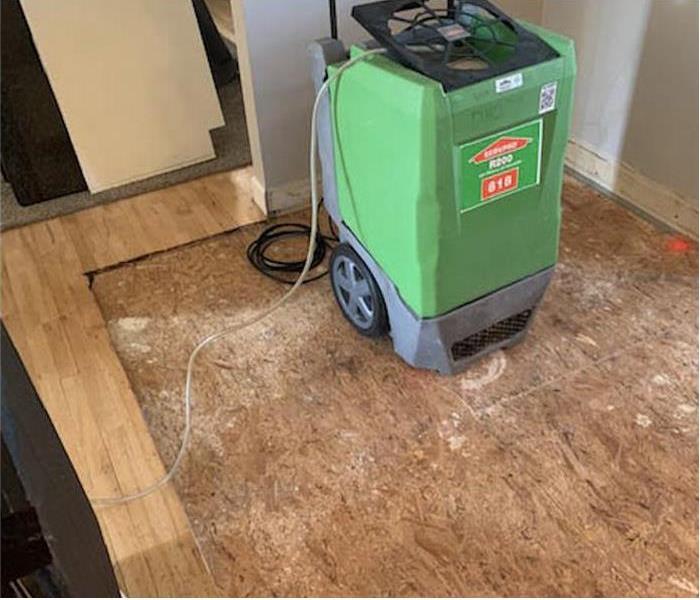 Damages from water need immediate attention, if not within 48 hours mold will begin to multiply. Call SERVPRO, We're available 24/7 for you.
Damages from water need immediate attention, if not within 48 hours mold will begin to multiply. Call SERVPRO, We're available 24/7 for you.
What You Should Know About Different Types Of Water Damage And How To File A Claim
Water damage is a common reason homeowners file an insurance claim. In fact, it is almost as common as wind damage. In other words, there are a lot of water damage claims. The result is that homeowners have quite a few questions about them. Especially when it comes to what is excluded. Here is everything you need to know about the types of water damage and making a claim.
There Are Different Types of Water Damage
There are several sources of water damage. The most common include a:
- Sudden, accidental discharge
- Sewer backup
- Overflow
- Flood
- Storm damage
Your Insurance Won’t Cover Every Type
Before filing an insurance claim, most people come up with many questions, including whether their policy will cover the damage. Unfortunately, homeowner's insurance focuses on sudden events, like an accident discharge, and won't cover every type of damage.
Gradual Damage Is a Problem
Gradual damage occurs when something slowly leaks over a period of time and ruins your property. Gradual damage occurs a lot more frequently as the source of an insurance claim than you would expect. However, this is an example of something that is generally not covered by your policy.
There Are a Few Types of Gradual Damage
Several types of gradual damage require a water restoration company to come to your home in Atco, NJ. For instance, plumbing leaks, cracks in the foundation, deteriorating roofing, mold, old electrical wiring, and poor maintenance are the most common, and they are generally excluded under your policy.
How It Affects Your Home
Your home is full of nooks and crannies. What makes gradual damage worse is that it often occurs in these hidden spaces. Because of this, it can get in and cause excessive damage that is not covered by your insurance.
While a pipe burst will be covered under your insurance policy, there is a good chance that gradual damage will not be. To be properly prepared, it is best to know about the types of gradual damage and how they affect your home.
What To Expect During the Sewage Cleanup Process
3/1/2022 (Permalink)
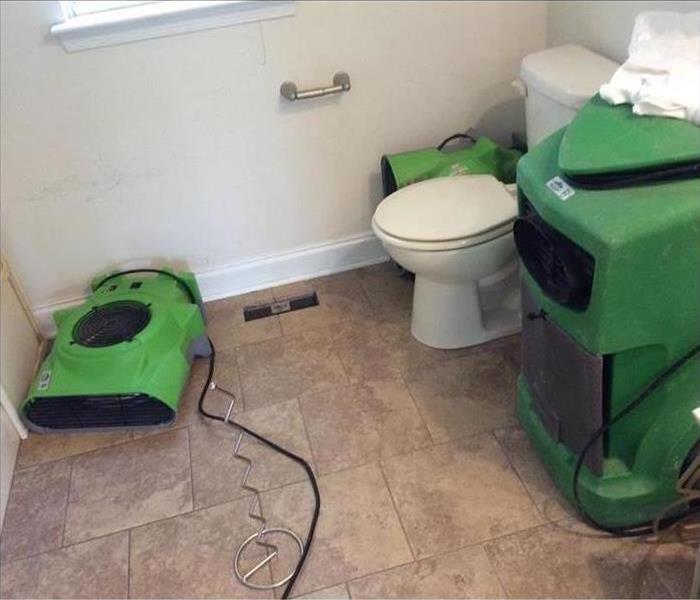 When you find sewage in your home, be sure to call the trained experts at SERVPRO for cleanup and restoration services.
When you find sewage in your home, be sure to call the trained experts at SERVPRO for cleanup and restoration services.
During The Sewage Cleanup Process, What Should You Expect?
Sewage backup can cause extensive damage to your home in Clementon, NJ, along with health and sanitation problems. Because sewage can contain dangerous bacteria, parasites, viruses and other contaminants, proper sewer cleanup is critical. Luckily, emergency restoration professionals have the necessary tools and techniques to provide the solutions you need. Depending on your situation, here’s what you can likely expect during the cleaning process.
Extraction of Water and Sewage
The first step to sewer cleanup is usually to remove all water and sewage from the area. This can be done with pumps or vacuums, depending on the size of the spill. Contaminated water will be classified into one of three categories to determine a plan of action.
• Category 1 is clean water that does not pose a hazard to humans or animals. An example of this water is that from an overflowing sink or broken water line.
• Category 2 is gray water, such as that from a flooded toilet with only urine present or from a malfunctioning washing machine or dishwasher. This category may cause sickness or discomfort.
• Category 3 is black water and contains dangerous sewage. This water can come from sources like an overflowing toilet containing feces or floodwater from rivers, lakes or streams.
Property Inspection
Next, the area will be carefully inspected for damage. Flooring, ceilings, drywall and other structural materials can be affected. Personal belongings, including furniture and clothing, are also at risk for contamination from sewer backup.
Drying Procedure
Dehumidifiers and other professional equipment can be used to remove remaining moisture and lower humidity, preventing further damage.
Disinfection and Sanitation
In order to prevent mold, bacteria and parasites from growing, your home will need to be effectively cleaned and deodorized. This can ensure protection from illnesses and eradicate unpleasant odors.
Restoration
The final step of the process is to return your home to its original state. This may involve fixing or replacing damaged items, along with repairing structural damage.
Sewer cleanup may seem like a daunting task, but with the help of qualified professionals, you can restore your home quickly and safely.
Why are steel braided water supply lines broken?
1/2/2022 (Permalink)
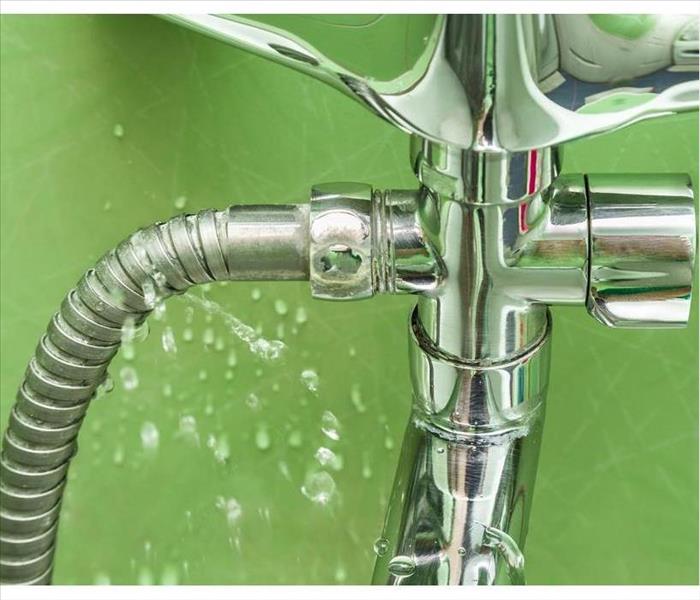 If you find a leak caused by a water line, call a professional water mitigation team.
If you find a leak caused by a water line, call a professional water mitigation team.
Why Are Steel Braided Water Supply Lines Bursting At The Seams?
If you have discovered a water leak under a sink or behind an appliance at one time or another, you are no alone. According to experts, a water supply leak is found by thousands of individuals each year. Though the leaks may take you by surprise, they are more frustrating when the tubing that ruptured was supposed to have a lifetime warranty. Hoses causing supply line damage are generally hidden, and that can be the root of the problem.
Where Are the Lines?
Supply line hoses, whether made of plastic or steel braids, connect the city water line coming into your residence in Berlin, NJ, to each appliance in your home. That includes:
- Washers
- Water heaters
- Sinks
- Ice makers
Why Do the Lines Break?
Stainless steel is a high-end choice for plumbing lines in modern homes and typically replaces the more common plastic tubes. While it is not widely known, stainless steel reacts with chemicals in household water. That means the lifetime guaranteed steel braided water supply lines are probably not going to last a lifetime, and supply line damage will probably occur just a few years after it is installed.
What Is the Problem?
The problem is chromium. Stainless steel has chromium added when it is created to help resist the corrosive influence of oxygen in the water. However, chromium is highly reactive to chlorine, and therein lies the problem. When the common household cleaner dissolves into the humid air of your home, it can attack the tubing because hydrochloric acid is formed. Sadly, even the strongest stainless steel is not immune to the acid, and a bathroom leak can occur.
What Can You Do?
If you find a leak caused by a water line, call in a professional water mitigation team. The professionals can provide you with the latest replacement plumbing lines that technology has to offer. They can also help you clean up any supply line damage in your home and check for lingering mold that may have grown.
Be kind to your home and check the water supply lines twice a year. Find the leaks early and save yourself the headache of an extensive home repair.
 As experts specializing in commercial restoration, our goal is to equip you with the necessary insights and steps to effectively manage emergencies.
As experts specializing in commercial restoration, our goal is to equip you with the necessary insights and steps to effectively manage emergencies.



 24/7 Emergency Service
24/7 Emergency Service







